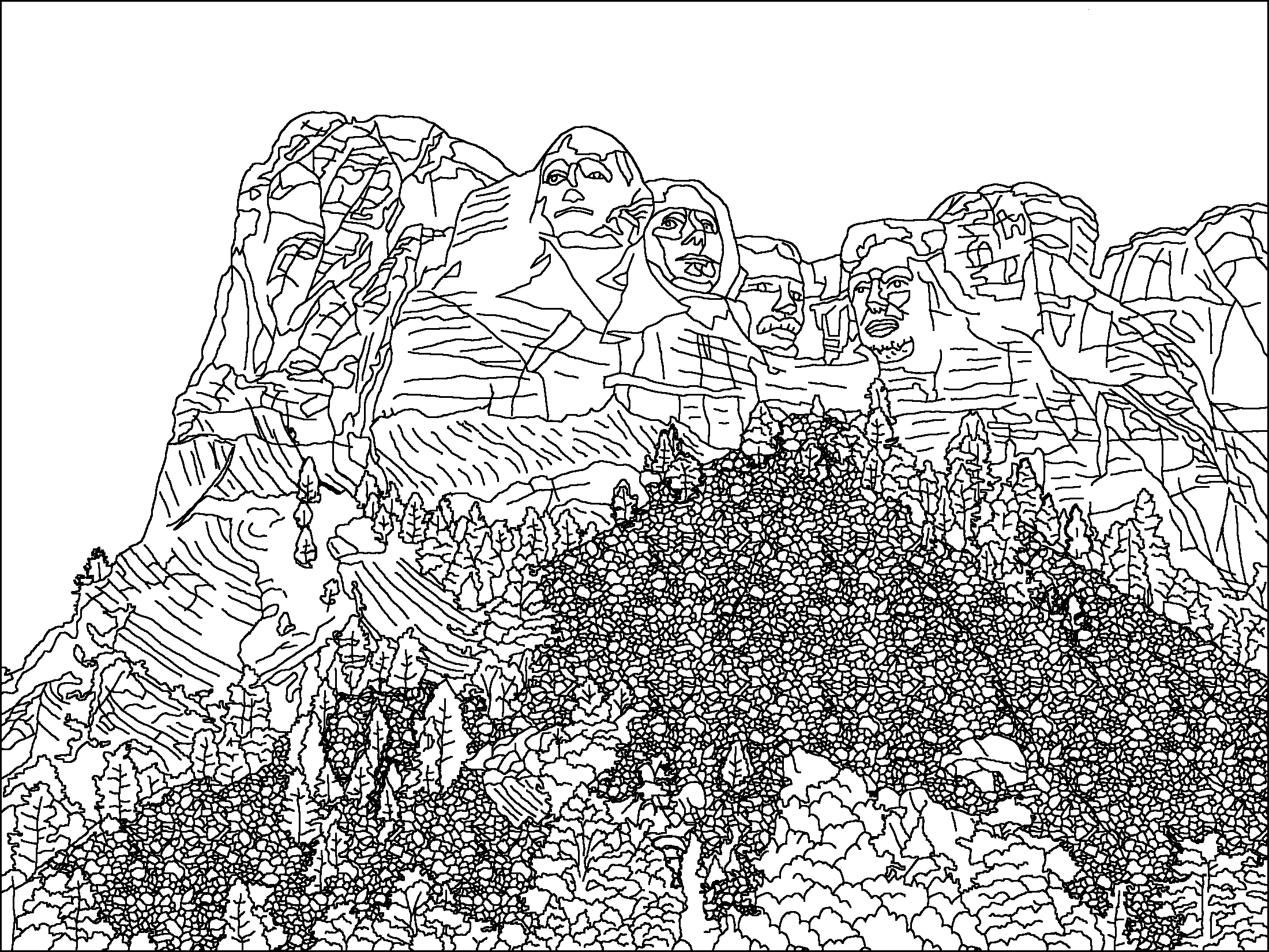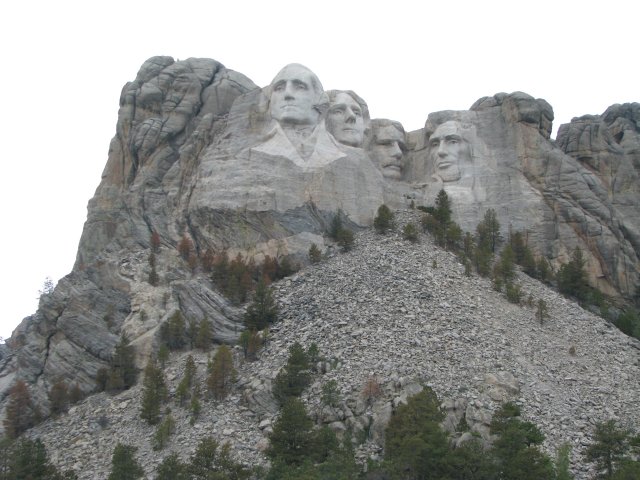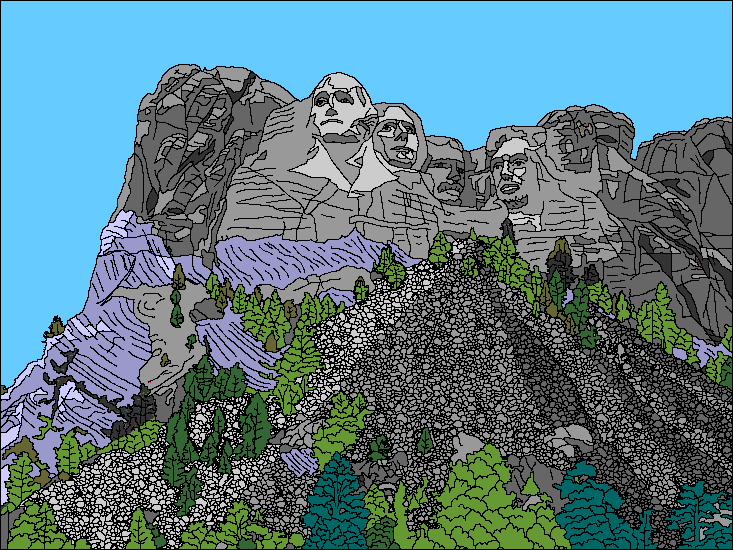Mount Rushmore, South Dakota
Steven Dutch, Professor Emeritus, Natural and Applied Sciences, University of Wisconsin - Green Bay
Location: 43o 52' 45" N, 103o 27' 35" W.
The southern Black Hills have a distinctive topography of granite knobs, one of which was carved into the memorial at Mount Rushmore. A second knob is being sculpted into a likeness of the Indian leader Crazy Horse.
About two billion years ago, Wyoming and parts of adjacent states was a separate continent. Where the Black Hills now are was the continental shelf, covered by a thick blanket of sedimentary rocks. About 1.8 billion years ago, this continent collided with the ancestral core of North America. The sedimentary rocks were deformed and metamorphosed, and intruded by granite. Since the granite is more resistant than the sedimentary rocks, it stands in relief. The rocks we see here were once perhaps 10 kilometers (33,000 feet) or more below the surface, as far below the present surface as jet planes fly above it.
The bottom of the granite intrusion at Mount Rushmore can be clearly seen below Washington, the face on the left. Uniform granite is in contact with distinctly layered metamorphic rocks. The metamorphic rocks are also cut by a horizontal sheet of granite just above the tree line. A vertical granite intrusion cuts through the metamorphic rocks below and left of Washington. In real life the rocks are mostly gray but the colored diagram uses slightly different colors to distinguish the two rock types.
The huge cone of rock below the monument is called talus. Talus is simply fallen rock. It can be natural but in this case it is artificial. It is debris broken off the mountain during the carving.

Original Scene
 (author's image)
(author's image)
Possible Coloring

Return to Geology Coloring Book Index
Return to Professor Dutch's Home Page
Created 19 July 2009, Last Update 15 January 2020